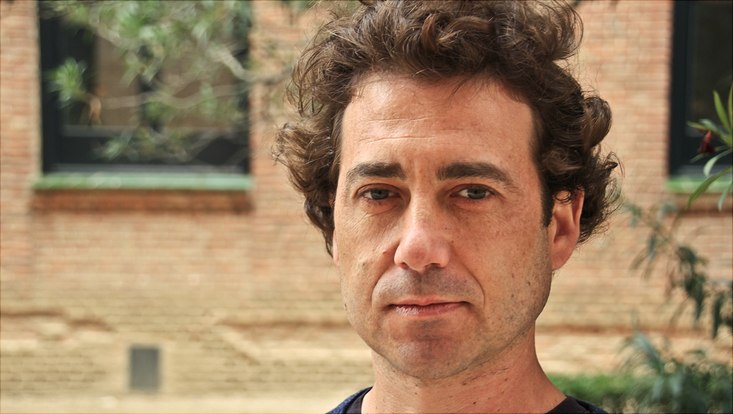Welcome AboardUnderstanding chaotic atmospheric processes betterProf. Dr. Juan Pedro Mellado Gonzalez will strengthen the Faculty of Mathematics, Informatics and Natural Sciences and the Cluster of Excellence CLICCS
18 August 2021, by Gonzalez/Red.

Photo: Elena Mellado González
Every year, Universität Hamburg welcomes many new researchers. Here, we present part of a series to introduce them and their areas of research.
Prof. Dr. Juan Pedro Mellado Gonzalez currently at Polytechnic University of Catalonia is joining Universität Hamburg as a Professor for Small-Scale Atmospheric Modeling, in the Faculty of Mathematics, Informatics and Natural Sciences as well as the Cluster of Excellence “Climate, Climatic Change, and Society” (CLICCS), starting in Winter Semester 2021/22.
My research area in 3 sentences:
My research focuses on microscale atmospheric processes and their interaction with larger-scale dynamics. I am particularly interested in turbulence and how it interacts with other phenomena such as cloud microphysics and radiative transfer. This allows us to use climate and weather models more reliably.
I explain what I do to my family and friends as follows:
Climate models explicitly represent down to kilometer scales, but smaller features need to be modeled. Look around and see the challenge: clouds, vegetation, water surfaces, urban areas. How do we do it? This is what I try to answer.
These are the methods I use:
I combine theory and simulations. With current supercomputers, we can easily simulate 1010 degrees of freedom. This figure seems huge, but it is minute compared to nature. Moreover, simulations necessarily simplify the original problem. That is why we still need a strong theoretical basis, to appropriately define these simulations and to appropriately interpret the results.
My research is important to society, to help resolve the following issues:
My goal is to understand the atmosphere better, and this has applications to climate research, air quality, renewable energy, and transportation. Advancing small-scale modeling will be, I believe, instrumental in developing the next generation of weather and climate models, where kilometer-scale resolution represents a change of paradigm with respect to the last half century.
My plans for working at Universität Hamburg:
Together with the current expertise at the university and its partner institutions, we can create a synergy for process studies that span from millimeter scales to planetary scales, that combines simulations, field measurements and laboratory studies, and that applies to weather and climate research as well as to environmental flows. Such a synergy will be quite unique worldwide.
This is why students should come to my lectures:
When I teach, I try to covey my fascination about how the atmosphere works. It is challenging: the system is chaotic, and we need to describe it statistically; environmental conditions are continuously changing, adding variability; the devil is often in the details, and we need accuracy. And yet, we understand quite a lot of how the atmosphere works!
Reaching out to the world: I work with the following international and federal institutions and universities:
For specific process studies, I collaborate with colleagues from the USA, the Netherlands and Spain. For applications to climate studies, one collaborates with groups all over Europe. Within Germany, I am currently working with TU Ilmenau, KIT, University of Bayreuth, University of Bremen, the Leipzig Institute for Tropospheric Research and the Max Planck Institute for Meteorology.
I am so glad to be in Hamburg, the city and the University, because...
... the city is cosmopolitan but with a local flare within the neighborhoods. The University and the city are a worldwide prestigious hub for climate research, curious students and researchers.

